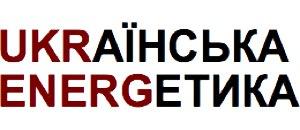For the time being, the trend of declining prices for gasoline and diesel fuel continues. What factors drive the lowering of prices and what factors obstruct that? And what direction will these factors take in the nearest future?
Based on the AMCU’s recommendation, the following major factors affecting retail prices for petroleum products can be highlighted: oil price, US dollar exchange rate, and retail market balance.
Oil price
The agreement achieved by OPEC+ countries to reduce the oil production output by 10 million barrels per day will surely stabilize prices. But the question is: for how long? According to a forecast by Goldman Sachs, such a reduction of supply is insufficient to offset the decreasing demand and stabilize prices in a longer term. An additional reduction by at least 5 million barrels per day will be needed, but that could be problematic. Moreover, according to a forecast by the U.S. Energy Information Administration (EIA), demand will continue to decline in 2Q 2020 as well, while consumption may drop down to 88 million barrels per day.
It is worth noting that these forecasts can change very quickly under the influence from news about coronavirus and related anti-epidemic measures. The extension of transportation restrictions and further decline of economic activity in most countries of the world may accelerate the expected decrease of demand for oil, which would lead to even lower prices. Overall, further decline of oil prices is forecasted by both Goldman Sachs and the EIA.
US dollar exchange rate
In March, the downturn in international stock and commodity markets and sentiments in Ukraine’s cash foreign exchange market caused devaluation of the hryvnia: the average hryvnia-to-US dollar exchange rate went up by 7.4% comparing to February and by 14.3% as of the end of March. Foreign currency interventions which the NBU made during this period helped somewhat stabilize the situation, and since the beginning of April the hryvnia began to gain strength.
Further situation in the foreign exchange market will depend on a number of factors. On the one hand, the GDP growth indicator is important. According to a macroeconomic forecast by the Finance Ministry updated on 3 April, Ukraine’s GDP will shrink by 4.8% in 2020. The government expects that inflation, which also bears upon the exchange rate, will increase to 11.6% (for comparison: in March, the NBU reported the consumer inflation rate of 2.3% yoy). It is worth noting that the macroeconomic forecast dated 30 March expected GDP to decline by only 3.9% and the inflation rate to be at 8.7%. In the matter of only a few days, the government significantly worsened its expectations regarding stability of the Ukrainian economy. These changes are telling, because they reflect the turbulence of the current economic situation.
Another factor which bears upon the stability of the foreign exchange market is successfulness of the government’s anti-crisis measures and the possibility to borrow from international financial institutions to finance sovereign debt (which according to the NBU’s forecast will increase from 50% to 60-70% of GDP). Expected decisions in this aspect include amendments to the state budget envisaging, inter alia, creation of a special fund to deal with economic consequences of the coronavirus pandemic, and the infamous banking regulation law, the consideration of which is being artificially dragged out by the unprecedented number of submitted amendments. The story of the law on the land market is not finished, either: despite positive voting, MPs have submitted 13 resolutions repealing this law, and each of them must be considered by the parliament.
The importance of the balance of payments as a factor which influences the exchange rate also should not be forgotten. Even though the consolidated balance of payments in February showed a surplus of US 733 million, further values of this indicator will depend on foreign-currency revenues from the main items of Ukraine’s exports: steelmaking and agricultural products (mostly cereal crops). The overall situation in the ferrous metals market is unfavorable: because of low demand, prices in a number of regional markets in April fell by 20% on average comparing to March. The situation in the grain market is also unstable: even though the wheat price is recovering after the slump which took place in the second half of February – early March, this recovery was driven by short-term factors: logistical difficulties, and also, possible and actual export restrictions imposed in grain producing countries (in particular, Kazakhstan and Russia). In a short term, the coronavirus pandemic and related measures stimulate accumulation of grain stocks in importing countries, which fuels the growing demand, but in a longer term, economic decline will reduce consumption.
Market balance
The shrinking market size due to shutdown of air and rail passenger transportation, suspension of public transport in cities and decreasing use of private cars is a major trend. This state of affairs increases competition among operators of gasoline filling stations, which are now forced to lower prices by narrowing down the margin “corridor”. Some experts also observe the revival of the shadow market for petroleum products, which also puts pressure on prices with cheaper supply. According to these experts, the January “sweep” of illicit filling stations has de-facto been leveled out.
An analysis of these key factors reveals their multidirectional effect on prices. Further decline of demand for oil and the shrinking retail market for petroleum products will intensify the trend of cheapening fuel, but it could be balanced out by the weakening hryvnia-to-dollar exchange rate. At the same time, these factors have one feature in common: variability under impact from an external excitant (the COVID-19 pandemic and measures taken to overcome it), which makes long-term forecasts of fuel prices quite problematic.
Andrii Ursta, trainee at DiXi Group Analytics Section





